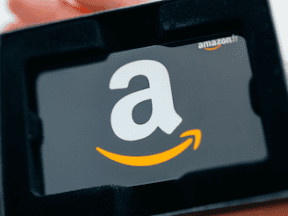
A punchout puts an online store inside of a B2B customer’s e-procurement system. It allows customer’s employees to access and shop your store without leaving their internal systems.
“Punchout” refers to the electronic communication between a company’s internal procurement systems and its suppliers. Using punchout, a buyer can access suppliers’ catalogs and then purchase products seamlessly, within his internal infrastructure.
Thus B2B ecommerce merchants that facilitate punchout make the purchasing process easier for their customers. In this article, I will share my experience with punchout, including what it is, how it works, and how merchants can deploy it for success.
What is a procurement system?
Procurement is a general name given to many different systems that streamline the buying process, including the management of purchasing policies, spending controls, and inventory levels.
There are three broad categories of e-procurement systems.
- Standard e-procurement functionality in an enterprise resource planning system. An example is the “Materials Management” module in the SAP ERP system.
- Add-on e-procurement that has been purchased and attached to an ERP system to extend its capabilities. Adding SAP’s “Supplier Relationship Management” to its ERP platform is an example.
- Cloud-based e-procurement services can be integrated with most ERP systems. Some even have their own marketplace of suppliers that have uploaded catalogs to make sourcing new items easier for buyers. Examples of cloud-based procurement services are SAP’s Ariba Network and Coupa eProcurement.
What is a punchout?
A punchout puts your online store inside of your customer’s e-procurement system. For example, if your customer uses an ERP system, such as SAP, to manage purchases, the customer’s employees could access and shop your online store without leaving the SAP platform. There are many benefits to being integrated into your buyers’ e-procurement systems. I’ll address them later in this article.
How does punchout work?
Once a B2B ecommerce site has punchout integration with a buyer’s e-procurement system, the following steps will occur when the buyer places an order.
- User logs into her e-procurement system and selects your company as the vendor to place an order with.
- Your ecommerce store will (typically) appear inside a window in the user’s e-procurement system. The user will have the full shopping experience that your site offers. She could search, browse categories, see product content, and add items to her cart. The only difference to the user is that instead of checking out, she will click a button to transfer the items in the cart to her e-procurement system.
- After the items are transferred, the user will place a purchase order in her normal process.
What are the common types of punchout?
- Catalog interchange format files are not technically punchouts. But they come up frequently in punchout conversations. CIFs are no more than an upload of product data into an e-procurement system. The data is static, which means that adding to or altering it requires manual work. I rarely recommend this option and resort to it only when customers demand it. CIF is one of the standardized file formats for these type catalogs.
- cXML, OCI punchout. “Commerce eXtensible Markup Language” and “Open Catalog Interface” are the two standards for communication between ecommerce platforms and e-procurement systems. cXML is the most widely used standard outside of SAP, which uses OCI.
- Level 2 punchout. This method combines your ecommerce site with a catalog file that provides the same information as CIF. Supplying this additional file to buyers’ e-procurement systems means that they can access your punchout website in two ways. First, a buyer selects your company as a vendor and shops on your website via the punchout. Second, a buyer searches for and find items directly in his e-procurement system and then clicks to punch out to the corresponding product page on your website.
Who uses punchout?
B2B companies, especially medium-to-large ones, likely use or plan to use punchout. Roughly half of B2B companies, reportedly, use an e-procurement system and 33 percent have plans to implement one. If your B2B customers use an e-procurement system, you should discuss punchout with them. Larger B2B suppliers such as Staples, CDW, Amazon Business, and Grainger facilitate punchout.
How can punchout help my business?
- Punchout is quickly becoming a requirement for B2B companies. Punchout is often a requirement in RFPs for medium-to-large purchases. It’s critical that B2B ecommerce merchants offer it.
- Punchout improves the user experience for your customers. E-procurement systems typically do not provide the best user experience for searching, browsing, and accessing product information. Punchout overcomes these challenges by giving users access to your website. Punchout also streamlines the procure-to-pay process by allowing all steps in the process to be completed within their e-procurement system.
- Punchout helps gain exposure with new users within a single customer account.
- Punchout leads to more sales with existing customers and provides the capabilities to attract new customers of any size.
How can my business get started with punchout?
- Find out if your customers could benefit from punchout. Do they currently use or plan to use an e-procurement system? Are they using punchout with other vendors?
- Make sure you have the right technology to build and support punchout as a sales channel. Option one could be to use your current ecommerce platform. Enterprise-level ecommerce offerings often implement and support punchout. The second option could be a third-party punchout service. It can connect your ecommerce platform and your customers’ e-procurement system. In my experience, these third-party services work with virtually all platforms and systems.
- Educate your sales team on the benefits of punchout and encourage them to make it a standard part of their dialog. Explain to your team why buyers are making the shift to e-procurement over traditional methods of buying. Once your team appears to understand punchout, have them explain it to you.
- Make offering punchout to customers a requirement for the sales team. If a team member isn’t comfortable pitching it in detail, encourage him to at least start the conversation. Then bring in someone who is better positioned to pitch it. Encourage the team to “sell up,” to find the decision maker that can approve a punchout integration. In my experience, that decision can involve multiple people at multiple levels.
- Use past punchout successes as examples to gain trust and consideration with other customers.




